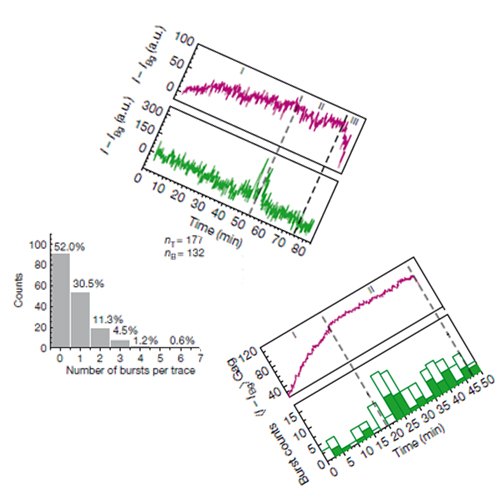Live-cell visualization of dynamics of HIV budding site interactions with an ESCRT component
10-Mar-2011
Nature Cell Biology, 2011, doi:10.1038/ncb2215, Pages: 469–474 published on 10.03.2011
Nature Cell Biology, online article
Nature Cell Biology, online article
HIV (human immunode_ciency virus) diverts the cellular ESCRT (endosomal sorting complex required for transport) machinery to promote virion release from infected cells. The ESCRT consists of four heteromeric complexes (ESCRT-0 to ESCRT-III), which mediate different membrane abscission processes, most importantly formation of intralumenal vesicles at multivesicular bodies. The ATPase VPS4 (vacuolar protein sorting 4) acts at a late stage of ESCRT function, providing energy for ESCRT dissociation. Recruitment of ESCRT by ate-domain motifs in the viral Gag polyprotein and a role of ESCRT in HIV release are _rmly established, but the order of events, their kinetics and the mechanism of action of individual ESCRT components in HIV budding are unclear at present. Using live-cell imaging, we show late-domain-dependent recruitment of VPS4A to nascent HIV particles at the host cell plasma membrane. Recruitment of VPS4A was transient, resulting in a single or a few bursts of at least two to _ve VPS4 dodecamers assembling at HIV budding sites. Bursts lasted for _35 s and appeared with variable delay before particle release. These results indicate that VPS4A has a irect role in membrane scission leading to HIV-1 release.











